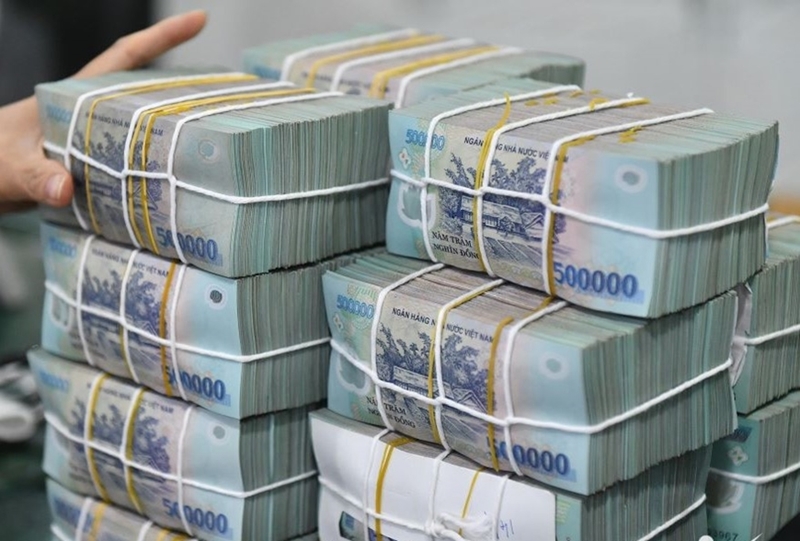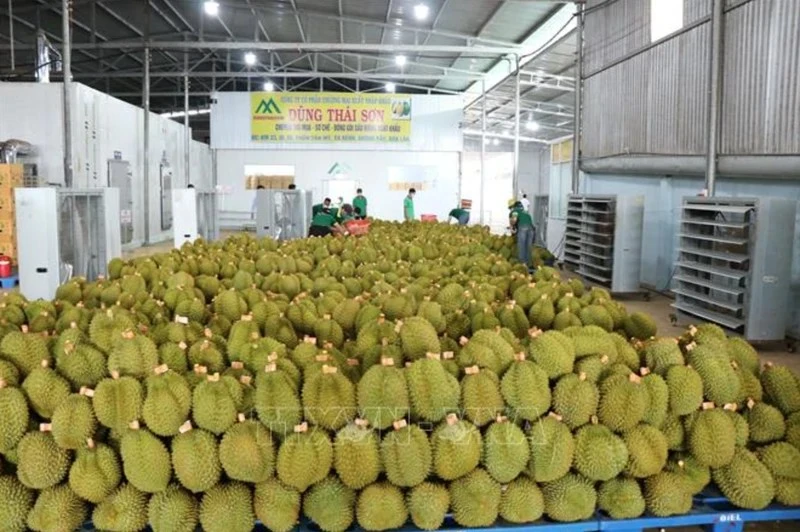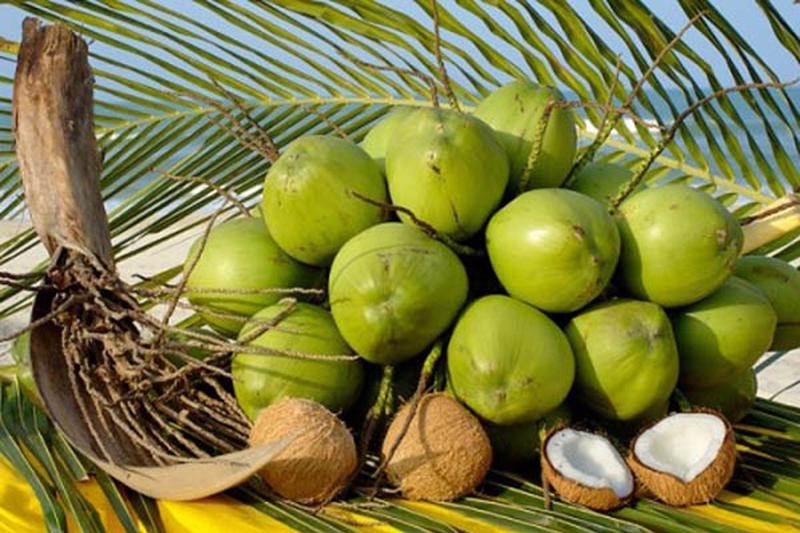 |
| AVAC General Director Nguyen Van Diep (first, left) and representatives from the Philippine enterprises inspect a farm with vaccinated pigs. (Photo: VNA) |
Diep informed that on August 26, a delegation of the Philippines visited Vietnam to work with and inspect the company’s vaccine production factory to prepare for the export of the vaccine batch, which is part of 600,000 doses ordered by the Philippine government.
He said AVAC has supplied about 2.3 million doses to the domestic market and exported 305,000 doses, including 300,000 doses to the Philippines and 5,000 doses to Nigeria.
The company is registering for circulating its vaccine in countries such as India, Indonesia, Malaysia, Nepal, Myanmar and Nigeria.
In July 2023, the Philippines imported 300,000 doses of AVAC's African swine fever vaccine and organised a 3-phase vaccine evaluation on 30 large-scale farms with 150,000 pigs. All vaccinated pigs are safe and protected. With this result, in July 2024, the Philippines accepted the ASF LIVE vaccine of AVAC to circulate in this country.
Regarding other export opportunities for the vaccine, Diep said that it is expected that in May 2025, the World Organisation for Animal Health will issue standards for African swine fever vaccines.
Countries are currently waiting for the organisation’s standards to develop their own standards, he said, adding that it will leave a great impact on the export of African swine fever vaccines.
Regarding the domestic market, he said that many large enterprises have used the AVAC vaccine such as CP Vietnam Livestock Joint Stock Company with more than 1 million doses. Meanwhile, other companies are testing such as CJ Vina Agri and Japfa Comfeed Vietnam, while small- and medium-sized companies buy through distributors.
Since July 2023, AVAC has supplied over 250,000 doses to livestock production divisions and agricultural service centres in districts nationwide. Many provinces and cities have used large quantities of the vaccine such as Cao Bang, Lang Son, Bac Ninh, and Lai Chau.
Long-term deposit interest rates reach 7.4%
Interest rates for VND-denominated for long term deposits at commercial banks have reached 7.4% per year, the Vietnam News Agency quoted the figure of the State Bank of Vietnam (SBV).
Under a recent report on deposit and lending interest rates of commercial banks, the SBV said the average deposit interest rates have increased to 6.9-7.4% a year for terms of more than 24 months.
Meanwhile, the rates for terms from 12 months to 24 months and from 6 months to 12 months are 5.5-6.2% and 4.4-4.8% per year, respectively.
For short-term deposits, the rate is 2.4-3.4% per year for terms from one month to less than six months and 0.2% for less than one month.
As for lending interest rates, the average lending interest rate of domestic commercial banks for both new and existing loans is in the range of 6.9-9.3% per year, of which the rate for short-term loans is 4.1-5.0% per year and 6.3-7.4% per year for medium and long term.
 |
| The average deposit interest rates have increased to 6.9-7.4% per year for terms of more than 24 months. (Photo: vietnamnet.vn) |
The average short-term lending interest rate for priority sectors is about 3.6% per year, lower than the 4% short-term lending interest rate cap prescribed by the SBV.
In the interbank market, the overnight interest rate is at 4.5% per year, while the rates for terms of one-week, two-week, and one-month are 4.57%, 4.52% and 4.79% per year, respectively.
Since the beginning of the second half of this year, many banks have increased deposit interest rates significantly.
Experts forecast deposit interest rates will increase further in the context of increasing inflationary pressure from the third quarter of this year.
The expected recovery in credit demand thanks to positive prospects for the manufacturing industry and export activities will also lead to banks' need to raise capital, which will cause deposit interest rates to continually increase at the end of the year.
Vietcombank Securities Company (VCBS) forecasts that deposit interest rates in the third quarter of 2024 will continue to increase by about 0.3-0.5 percentage points. The rising pressure may continue in the fourth quarter, pushing the rate up by 0.5-1 percentage point for the whole year.
Banking expert Nguyen Tri Hieu said economic growth is stronger and individuals and enterprises are borrowing more from banks. This will push up the credit demand so banks are tending to increase interest rates to attract deposits to meet customers' capital needs.
China's door opened wide for Vietnamese agricultural product exports
China’s allowance of Vietnam's frozen durian, fresh coconut and crocodile exports is expected to brighten up the outlook of exports to the country, according to the Vietnam News Agency.
Earlier this month, the Vietnamese Ministry of Agriculture and Rural Development and China’s General Administration of Customs signed three protocols regarding the export of these products to China.
 |
| Durian exported to China (Photo: VNA) |
Since July 2022, when Vietnam’s fresh durian was officially allowed to be shipped to China, the export value of this fruit has surged, reaching 2.3 billion USD in 2023, with exports to China accounting for 90% of the Southeast Asian country's total. Therefore, China's decision creates more opportunities for the agricultural sector to increase its added value and mitigate risks associated with reliance on fresh product exports.
According to the Vietnam Fruit and Vegetable Association (Vinafruit), with the newly signed protocol, frozen durian is expected to join the list of billion-USD export commodities by 2025, and soon serve as a significant "boost" for the durian sector to reach the export value target of 3.5 billion USD, helping bring the overall fruit and vegetable export revenue to 7 billion USD this year.
Meanwhile, the export value of fresh coconut is forecast to increase by an additional 200-300 million USD in 2024 and continue to grow significantly in the following years.
Vietnam is currently among the top 10 largest coconut growers in the world, with an area of nearly 200,000 hectares and a yield of approximately 2 million tonnes per year, primarily concentrated in the Mekong Delta region.
In addition to frozen durians and fresh coconuts, the export of farmed crocodile products also contributes to diversifying Vietnam's agricultural exports to China.
 |
| Vietnam’s fresh coconut (Photo: vneconomy.vn) |
Farmers and exporters are advised to strictly follow regulations and standards on product quality.
In the first seven months of 2024, China remained one of the top three markets for Vietnam's agro-forestry-aquatic product exports, accounting for 20.5% of the total, a 11.3% increase compared to the same period last year. With the three new protocols, Vietnam's agricultural product exports to China are expected to continue to "boom," providing a favourable foundation for achieving the sector's export target of 54-55 billion USD in 2024.
Phone and component exports to India skyrocket in seven months
Vietnamese phone and component exports to India during the past seven months of the year reached US$1.15 billion, representing a sharp rise of 102% on-year, Radio the Voice of Vietnam quoted the data of the General Department of Vietnam Customs.
Statistics indicate that bilateral trade turnover between the nation and India during the reviewed period edged up 4.5% to nearly US$8.67 billion against the same period from last year. Of the figure, Vietnamese export turnover to India surged by 15.2% to US$5.37 billion on-year.
With regard to the overall export structure, the group of phones of all kinds and components took the lead with a turnover of US$1.15 billion, thereby accounting for 21.5% of the total export turnover.
 |
| Phone and component exports to India skyrocket in seven months (Photo: VOV) |
The category of computers, electronic products, and components ranked second with a turnover of US$945 million, duly accounting for 17.5% of the export proportion. This was followed by the group of machinery, equipment, tools, and spare parts with a turnover of US$507 million, making up 9.4% of the export proportion.
Meanwhile, Vietnamese imports from India during the reviewed period reached US$3.3 billion, down 9.2% compared to the same period from last year and making up 1.55% of the nation’s total import turnover.
Most notably, Vietnam racked up a trade surplus of US$2.06 billion with India during the seven-month period, representing a sharp increase of 101.8% on-year.
Insiders pointed out that trade ties continue to play a key role in terms of the Vietnam-India relations, with sustainable growth being recorded over the past 26 years.
Specifically, two-way trade turnover rose to US$15 billion in 2022 from only US$200 million in 2000, thereby making India one of the nation’s eight major trading partners. The country is also among the four ASEAN member states that have already established close trade ties with India.
In the South Asian region, India emerges as the largest Vietnamese trading partner, thereby accounting for nearly 80% of Vietnam's total export turnover to the area.
The commodity structure between both sides is considered to be complementary. Accordingly, key Indian export items to the Vietnamese market include essential raw materials and finished products such as iron and steel, chemicals, pharmaceuticals, garments and textiles, animal feed, and seafood.
In contrast, major Vietnamese export products to the Indian market include computers, mobile phones and components, iron and steel, chemicals, timber and wood products, footwear, spices, coffee, and pepper.
Last year, Vietnamese exports to India reached US$14.36 billion, representing a rise of 6.8% compared to 2022, making up for more than 2% of total Vietnamese export turnover./.